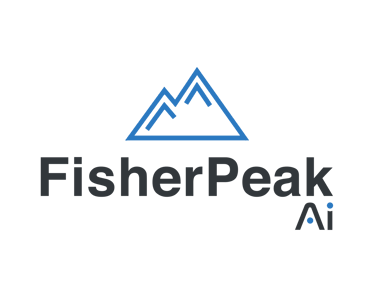Automate or Be Automated: How AI Generalists Create Digital Workers
Part 3: You're wasting hours on tasks an AI agent could handle—learn how to automate your work before someone automates you.
AI SKILLS FOR THE FUTURE OF WORK
Grant DeCecco
5/28/20254 min read


Automate or Be Automated: How AI Generalists Create Digital Workers
This is Part 3 in my 6-part series on the AI skills that will shape your future. In Part 1, I explained why adaptability—becoming an AI generalist—is your best bet for long-term career growth. In Part 2, we explored how to build custom apps without coding. Today, we’re talking about your next AI superpower: automation.
As a digital transformation expert with two decades of experience helping organizations evolve, I’ve never seen a shift this big. AI isn't just another technology trend—it's changing how work gets done. Automation isn't optional anymore. It’s the difference between leading innovation or falling behind.
What do I mean by automation?
I’m not talking about a simple Zapier or MAKE.com task or setting up a few email triggers. I’m talking about creating AI-powered digital workers—automated agents that handle tasks, respond to input, make decisions, and operate 24/7 without fatigue or oversight. These digital workers are built by combining a set of tools and skills to create flexible, self-operating workflows that replace manual effort across departments.
AI automation isn’t a one-size-fits-all solution—it’s a layered capability:
AI Agents: Think of these as digital assistants that use large language models to understand prompts, process data, and make decisions. You can configure them to respond to customer inquiries, summarize reports, or guide users through a process.
Workflow Automation: This involves linking apps and data sources so information flows automatically. Instead of manually copying a new lead into a spreadsheet, for example, an automation can update your CRM, notify the team, and send a welcome email—all in real time.
Prompt Engineering: The quality of AI output depends on the quality of the input. Writing effective prompts is a skill that turns general-purpose models into reliable tools. It’s what lets you automate not just tasks—but smart decisions.
API Integration: APIs let your systems talk to each other. With basic API knowledge, you can connect your automations to internal platforms, databases, or customer tools to unlock full-scale efficiency.
These layers come together to create powerful systems that free you from repetitive work and unlock time for higher-value priorities.
Real-world examples of high-value AI automation
Here are just a few ways organizations are already using AI automation to deliver measurable value:
Customer Support Chatbots: AI agents integrated into support channels (like Intercom or Zendesk) are handling thousands of inquiries per week—resolving common questions instantly and routing complex issues to human agents. This reduces response times and improves customer satisfaction.
Sales and Lead Qualification: AI workflows are scoring leads based on website behavior, automatically adding qualified prospects to CRMs, and triggering follow-up sequences. Tools like Clay and Zapier combine AI with data enrichment to increase pipeline quality without additional sales hires.
Internal Communications: Companies are using AI to summarize daily meetings, generate weekly updates, and automate internal reporting. For example, AI agents can pull data from project management tools like Jira or Monday.com and produce readable summaries for stakeholders.
HR and Onboarding: Automation platforms are streamlining employee onboarding—generating personalized welcome emails, scheduling training, and provisioning tools. This reduces manual admin work and creates a more consistent new hire experience.
Content Generation at Scale: Marketing teams are automating newsletter drafts, social posts, and campaign copy using GPT-powered workflows. Combined with review automation, teams produce more content, faster, with fewer revisions.
These examples aren’t future-state—they’re happening right now across small businesses and large enterprises alike.
Why this matters
Every team and business faces resource limits. Budgets, time, people—there’s never enough of any of them. AI automation doesn’t just reduce workload; it increases your operational capacity without increasing headcount.
It means fewer dropped handoffs, faster execution, and more consistent quality. Tasks that used to take hours now take minutes—or disappear completely. And once these systems are in place, they work reliably in the background.
The impact? You move faster. You gain a competitive edge. You become the person in your organization who can identify friction and fix it without waiting on IT or additional headcount.
This is the real power of AI automation—it’s not about replacing jobs. It’s about rethinking work. About using your time, skills, and attention on what actually drives outcomes.
What you can do this week
✅ Audit your daily workflow. What are the repeatable tasks taking up your time? Document 3–5 that frustrate you.
✅ Choose one AI automation tool. Start with Zapier or Make.com—both have beginner templates that are easy to try.
✅ Build a small workflow. Use a prompt to draft an email response, or automate sending a notification when a task is completed.
✅ Experiment with a simple GPT agent. OpenAI and Relevance AI let you create custom agents with no coding required.
✅ Map a future automation. Identify a workflow in your team or business that could benefit from more automation and outline what that would look like.
Start small. Test. Learn. Then scale.
You don’t need a technical background to automate with AI. You need curiosity, a willingness to try, and a clear understanding of where your time is going. The professionals who build and manage digital workers won’t be replaced. They’ll be the ones leading.
Stay tuned for Part 4, where we explore your next AI superpower: content creation.
Got questions? Let me know what you’re automating—or where you’re stuck.
